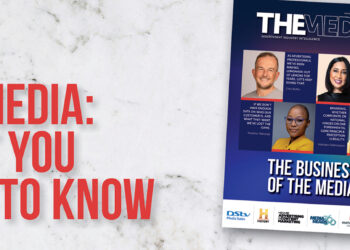When markets experience a downturn, digital publishers receive a deluge of lead generation campaign requests – generally measured on the lowest cost as brands scramble to generate leads right now. However, the key to sustained future sales, when customers have more purchasing power, is for brands to resist sacrificing the top and mid-funnel for the sake of fleeting short-term gains.

Tough times don’t last, but tough brands do. What makes a tough brand is one willing to build a relationship with their customer base through consistent messaging and presence now, all the while building a future pipeline. Tough brands communicate the why as much as the what. They spend money making sure potential clients understand their proposition, their values, and their purpose – and they build trust.
Building this bond requires some hard decisions, particularly when trying to make immediate sales to drive the bottom line. Focusing solely on the bottom of the sales funnel might bring the instant gratification of generating quick leads but – in this climate – do those leads result in meaningful conversions? Most often: no.
That’s why it’s important to approach advertising spend holistically. A mid-funnel strategy is especially valuable when it comes to building brand loyalty and generating a better quality of lead. Brands must continue to build the customer relationship, so that people who can’t buy now will still be there when they can afford to spend.
The enduring value of engagement
Mid-funnel advertising is all about engagement – you want to draw people in with something that is interesting, rather than trying to sell something now. The goal is to create an environment where your brand lives comfortably within the customer’s mind.
This isn’t to say that mid-funnel campaigns can’t generate leads. They can and do – but it isn’t their core focus. The idea is to place your brand firmly in your customers’ consideration set. Most of us purchase brands that we feel aligned with; our decision to buy certain products and services is driven by our emotional response to them. So, if your potential customer isn’t emotionally invested in your brand, it will be hard to convert now, and even harder later.
All leads are not created equal
By focusing only on an immediate lead without taking the time to communicate your brand promise, you will reach customers who are only interested in your brand because it’s seen as cheap. This is no way to build a lifetime relationship; your customers will simply switch for a cheaper offer. Many clients tell me we are not the cheapest lead generation partner for them, but we win on value of purchase and lifetime relationship value of that client. As a publisher, that’s where I’d rather be. Brands too should be more interested in differentiating their offer on factors other than price alone.
My personal experience as a consumer with short-term insurers is a good example. I’ve lost count of how many companies try to contact me daily and on every channel. This has become so invasive that many of those brands end up on my blocked caller list. I know I can get cheaper insurance, but I trust the brand I’m with. They charge a reasonable price, I know they are dependable, and I know they are good corporate citizens. They aren’t the cheapest, but that’s OK. I don’t mind that the brand I choose earns a little more of my hard-earned money, because I trust that they aren’t just interested in an immediate sale, and they care about our long-term relationship.
Building that relationship is not cheap, but its value is potentially priceless to the brand. In a mid-funnel campaign, other metrics such as engagement are a far better indicator of whether your brand is really communicating with a potential customer. Data from our content campaigns on News24 frequently shows engagement time with branded content far exceeds the time our visitors usually spend on news stories. This is attention that is very hard to generate in pure lead generation campaigns.
To fully appreciate whether your digital lead generation campaigns are working, you must at least be measuring quarterly customer retention in your success metrics – otherwise you’re not measuring the true cost of that lead.
What’s your key objective: short term win or sustained growth?
Growth doesn’t come from milking the territory already won. Growth comes from looking for new territory, whether that’s an untapped market or by convincing someone else’s customer that your brand is a great alternative. To build a relationship strong enough to gain or convert a customer, a little investment – as well as patience – is needed.
Brief early, brief deep
More broadly, I urge brands to “brief early and brief deep”: Have a deeper conversation with media owners about your brand purpose, the objectives and success metrics of your campaign, and where you believe your brand promise is superior to that of your competitors.
That way, the media owner can give you expert input as to what will work for you with their audiences – because often, what looks great on the rate card is not the right solution.
The possibilities will surprise you.
Craig Nicholson is sales director at Adspace24














